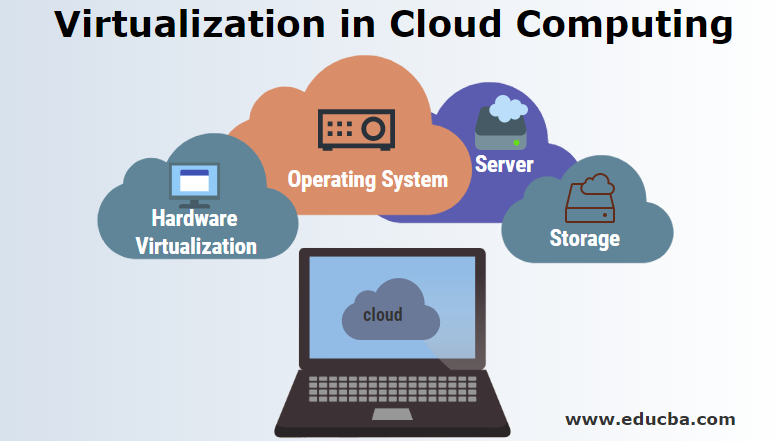Virtualisation was first introduced in 1960 by IBM in their mainframe computers. It refers to the creation of a virtual resource like server, desktop, operating system, and so on. It helps in achieving scalability and manage workloads that traditional computers could not achieve. Nowadays, it can be applied to various system layers, including server virtualisation, hardware-level virtualisation, and operating system-level virtualisation.
There are many virtual server web hosting providers that work on the principle of virtualisation technology. It uses software known as a hypervisor that uses hardware resources by abstracting it on a physical server and provide access to an emulated server known as a virtual machine.
There are two types of virtualisation, known as hardware virtualisation and OS virtualisation.

We will understand the difference between Hardware virtualisation and OS virtualisation.
Computer resources are slowly becoming limited, and we need more of it every day with increasing data. With the increasing volume of data, we need an infrastructure that can take care of all the data. Virtualisation gives us that option. Through hardware virtualisation, we can embed the virtual machine software into the server’s hardware components. All this can be easily accomplished with the hypervisor software. It helps in achieving the abstraction of computing resources from the software that uses cloud resources.
The hypervisor manages the hardware resources between the guest and the host OS. In short hardware, virtualisation means abstracting the physical hardware and using hypervisor or Virtual Machine Monitor. The guest OS represents the abstracted hardware as the actual hardware of the particular virtual machine.
When you install the hypervisor directly on the hardware system of the computer, we call it as hardware virtualisation. The fundamental task of the hypervisor is to do process monitoring and memory and hardware controlling. Once it is done, you can easily install different operating systems can be installed to run various applications on it.
Hardware virtualisation is done for reducing cost and increase flexibility. Here are some of the crucial benefits:
OS virtualisation refers to the installation of virtualisation software on a pre-existing operating system. The pre-existing operating system is known as the host operating system.
In this virtualisation technique, the user installs virtualisation software like any other application in the operating system and use this program to operate and create virtual machines. Since we install it on the host operating system, the virtualisation software allows direct access of virtual machines to the user.
The host OS provides the hardware resources required by the virtual machines. It also provides support in terms of memory, bandwidth.
As the host OS is a complete operating system, it can provide all the basic OS-managed functionalities like organizational management and administration tools for virtual host management. There are two types of OS virtualisation: Windows OS virtualisation and Linux OS virtualisation.
OS Virtualisation is a great way to save space, money, and efforts. Here are some of the essential benefits of using OS virtualisation.
1. Low on budget, space, and maintenance
Virtualisation is based on tapping or isolating the resources to emulate a new system which is not physically present. Same is the case with OS virtualisation. Since it is installed on your host OS, you don’t need different hardware as well. Hence saving up the cost and space for running various machines. Since no extra hardware is required, the maintenance cost and the time is saved.
2. Electricity savings
Since the machines are used virtually, electricity consumption goes down. This leads to
lower cooling requirements and low maintenance and saves electricity.
3. Efficiency
Virtualisation helps in enhancing the overall performance of your system. It allows the user to use server hardware and increase the return on investment efficiently.
Virtualisation is here for a long time with us, solving the problem of efficiency, budget, and performance. It helps in providing the best user experience with the least expenses. Many providers are using virtualisation for providing hosting services. You can check for virtual server hosting that uses virtualisation for delivering a smooth experience to its users.